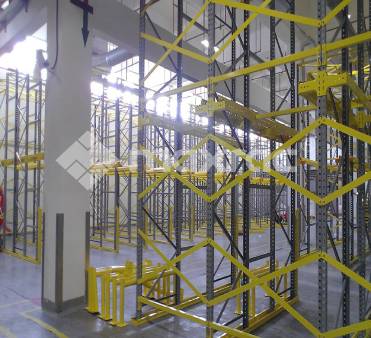Are you ready to build a new Warehouse Racking System, or upgrade an existing one? Either way, you have many solutions to choose from. If you want to keep it simple, start with the most popular options.
This is an affordable option for those with low volume storage needs. The setup creates a lower pallet storage capacity, but also features the lowest cost per square meter of racking. Today, we'll take a closer look at selective racking so you can determine if it's right for your needs.

Pallet Racking
To choose the right type of storage for your warehouse needs, start by examining the answers to the following five questions:
How much floor space do I currently have?
How much product do I need to store?
What is my ceiling height?
What is my overall budget?
How often do I need access to pallets?
Most selective racking is only one pallet deep, but some models can be used as a double-deep system. A single depth is desirable because it allows easier access for forklifts.
A common layout is to place one rack in a row. However, installing two racks back-to-back is ideal for companies that offer a wider variety of products.
Double depth is best for this setup only if you offer a large number of limited products. In this case, you can store two pallets deep, but keep in mind that this will limit forklift access.
Storage and selection methods
Selective pallet racking is designed around the FIFO method of inventory management. This means that the items entered into the system first are also removed first. The opposite method is LIFO, which requires employees to remove new items before accessing old inventory.
The FIFO system improves operational efficiency, maximizes available warehouse space and keeps products fresh. It also minimizes the risk of expiration that can lead to inventory washouts.
Following a FIFO approach, selective shelving gives employees access to every item in storage. This makes it ideal for companies with highly differentiated product lines and low turnover.
As with other Pallet Racking types, aisle width is a major consideration when installing a selective pallet racking system. This is because it plays a direct role in storage capacity.
Depending on the type of pallet handling equipment you use, your storage capacity can range from 35% to 75%. Keep in mind that even if you have narrow warehouse aisles, that doesn't always translate into lower storage costs.
Instead, these tight spaces increase the likelihood of human error, which leaves narrow spaces for mistakes. As a result, handlers often need more time to do their jobs, which can outweigh any benefits you get from larger storage.
The company also offers Heavy Duty Shelving, so please feel free to contact us if you need